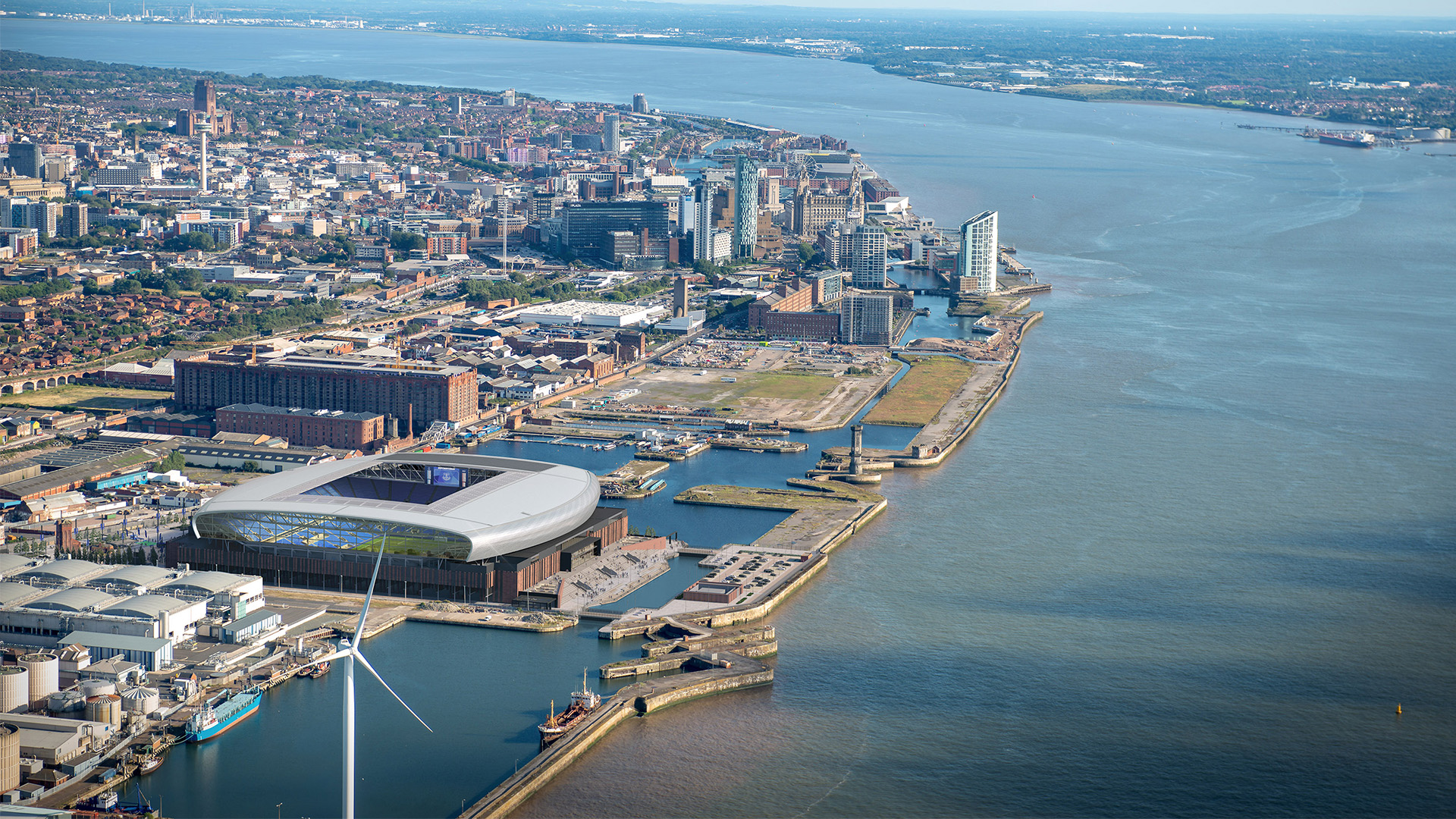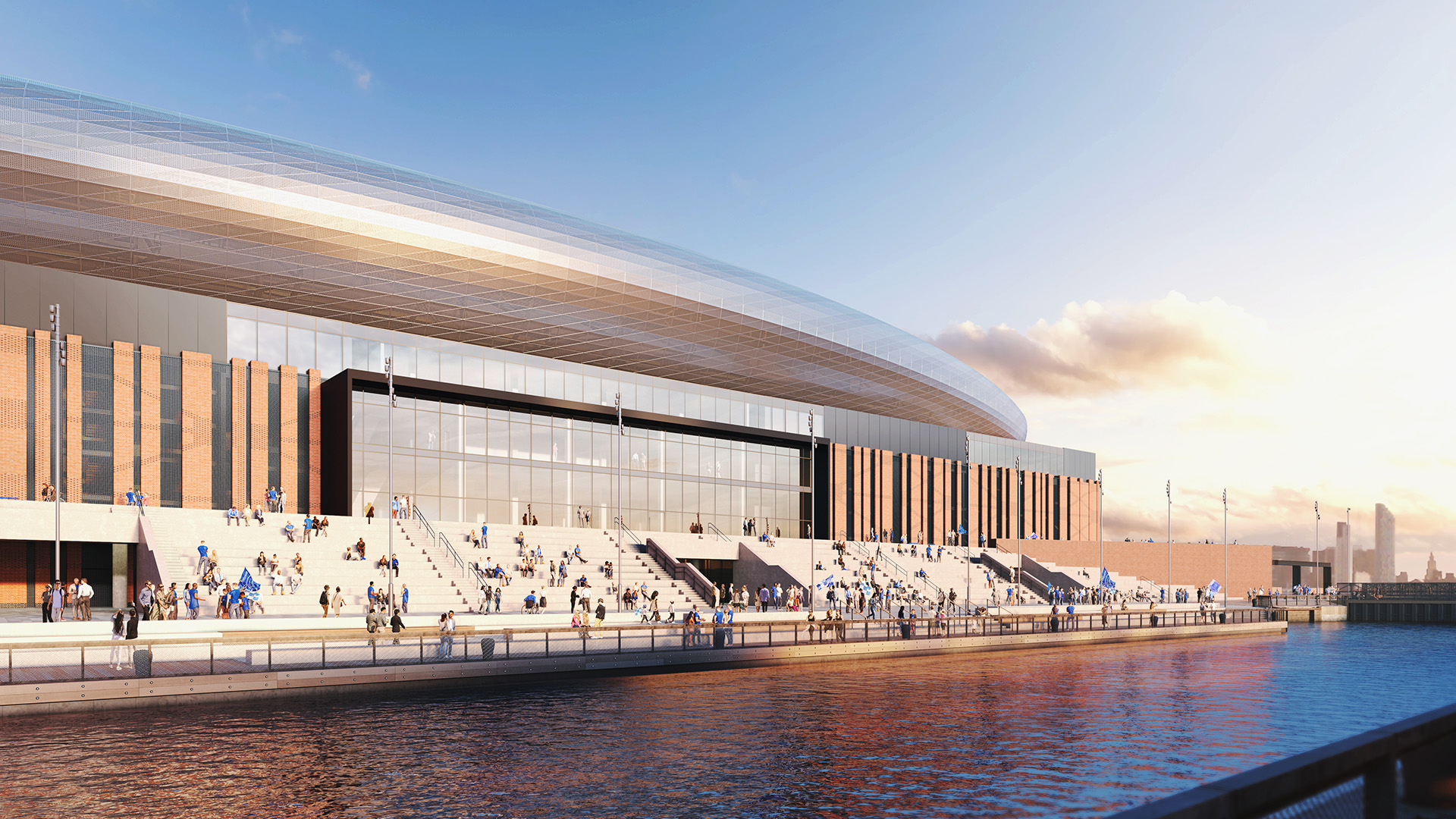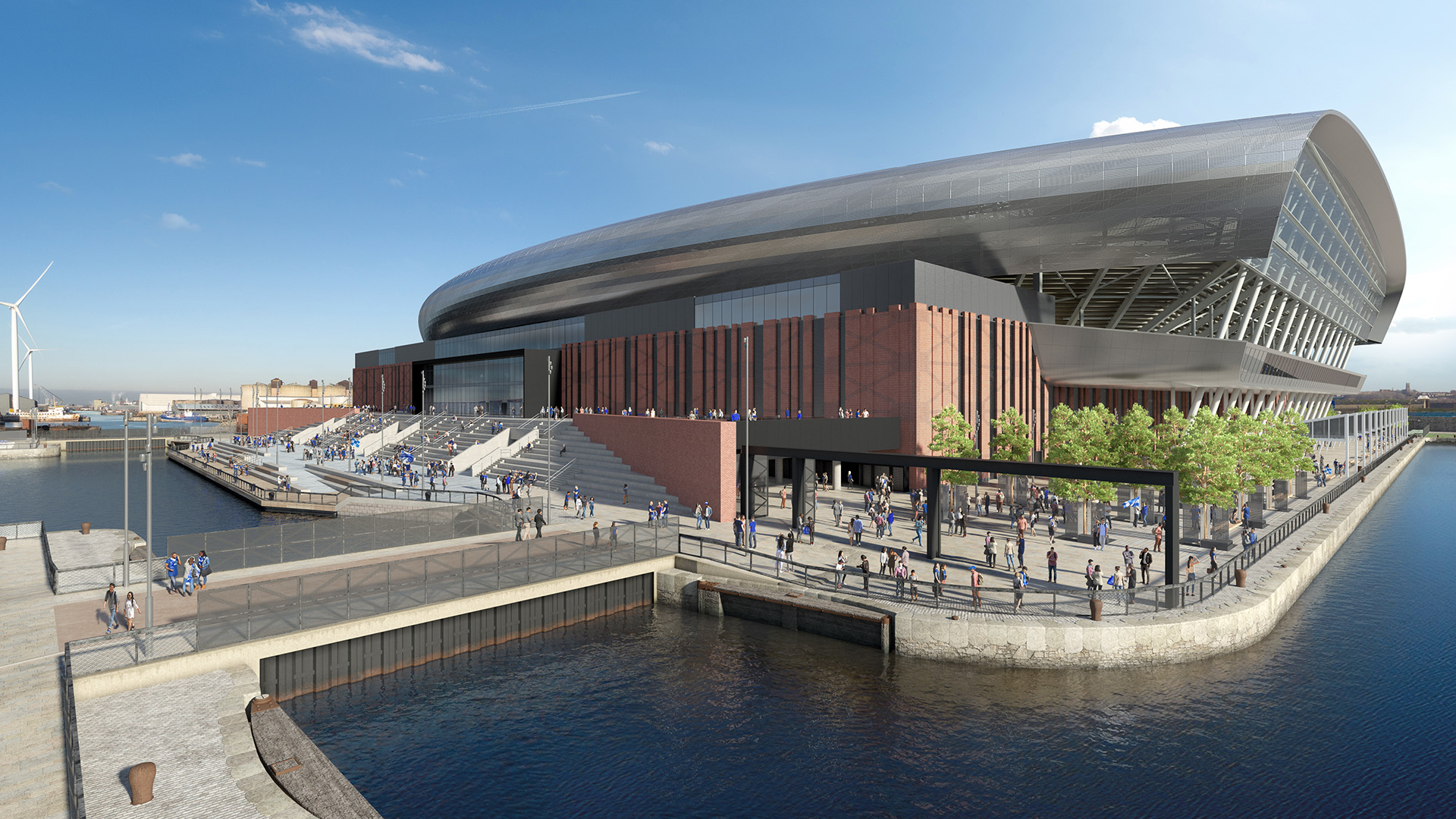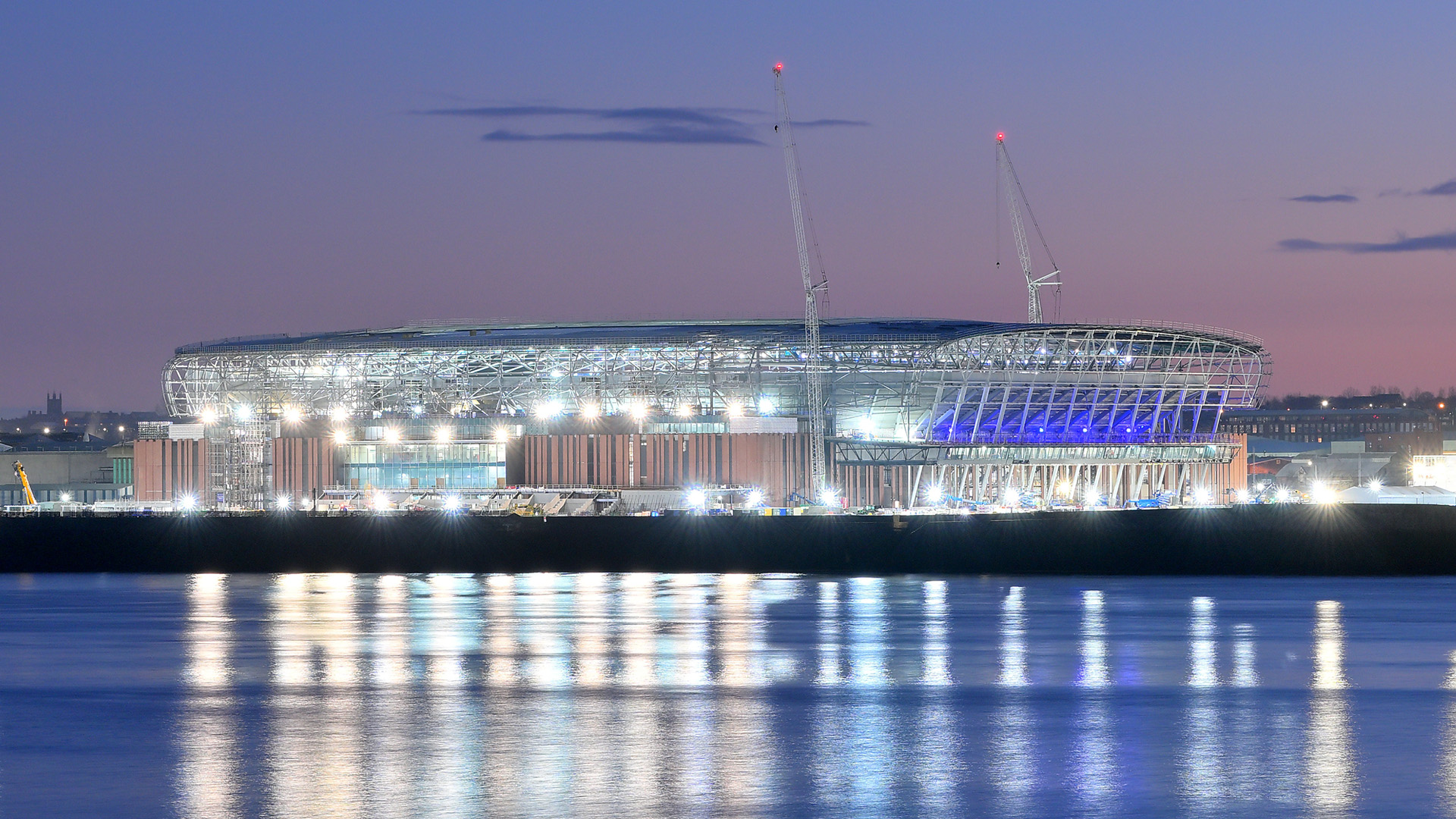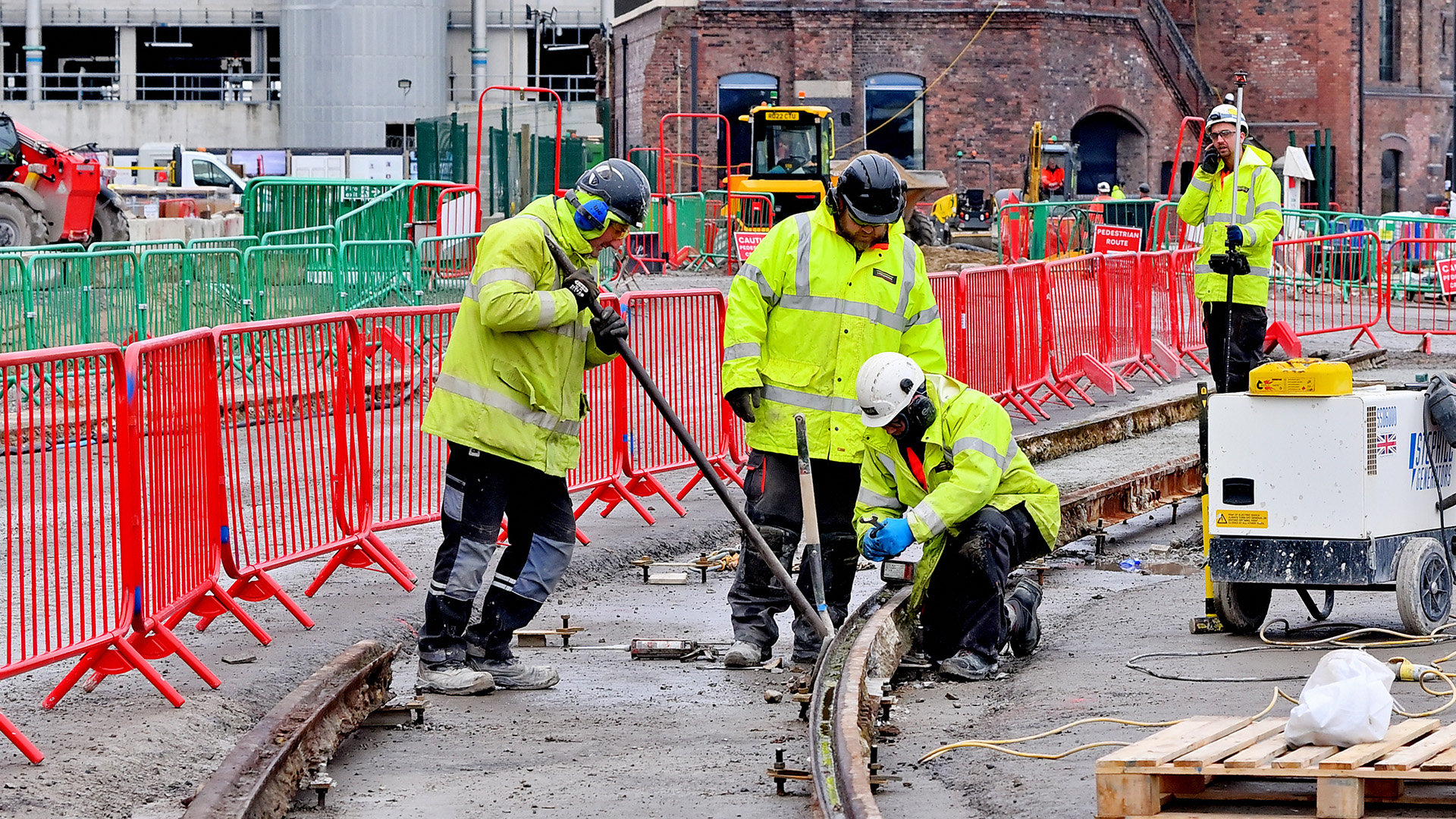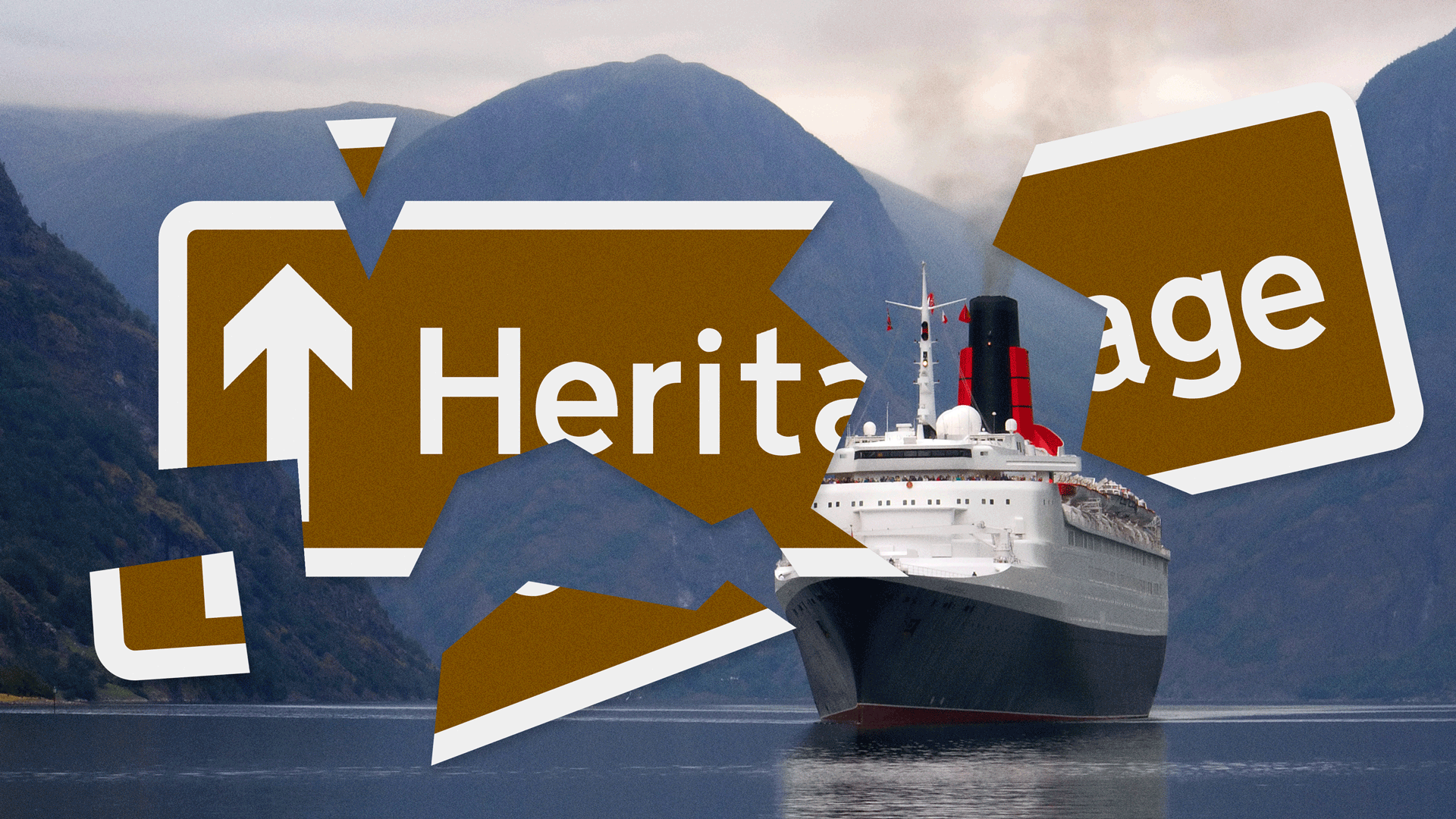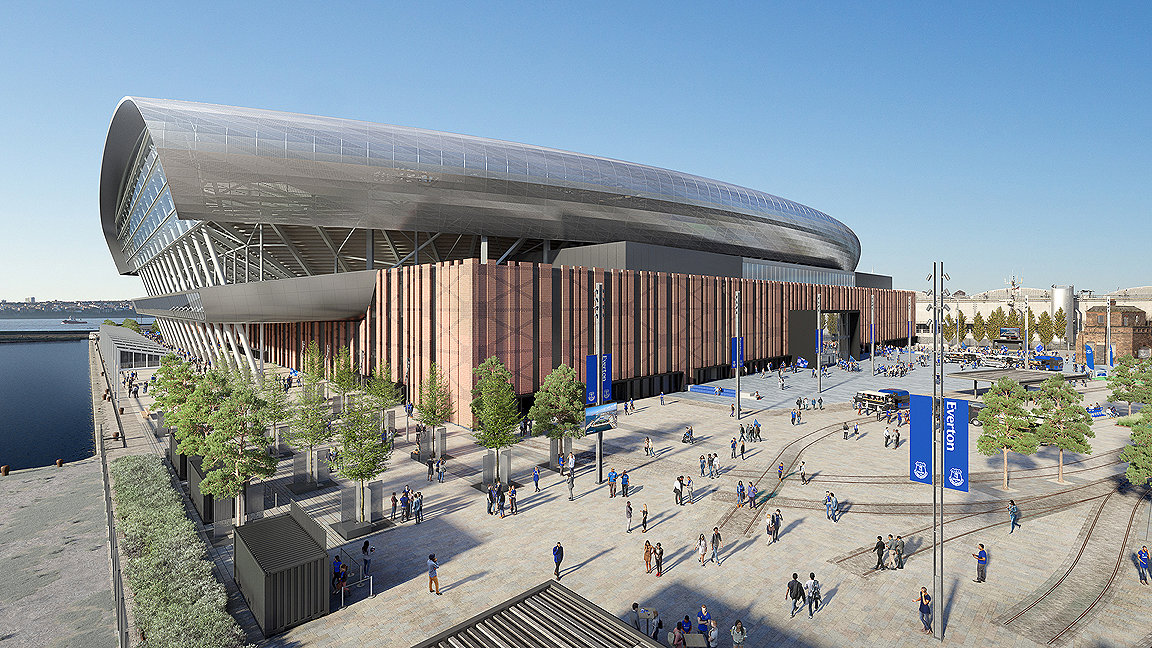
On a damp autumn day, the streets at the southern end of Liverpool’s Walton neighbourhood are quiet and mostly empty. Its rows of Victorian terraces are typical of many British cities: modest, tightly packed housing built to accommodate the workers that served local industry.
Except, at the end of Oxton Street, Winslow Street and half a dozen other small side roads, there isn’t a long-abandoned factory chimney or pithead. What dominates this area is the looming presence of Everton FC’s stadium, Goodison Park.
Among the oldest football stadiums in England, Goodison Park first hosted Everton in 1892. Over the subsequent decades, it has been redeveloped and remodelled as Everton’s popularity has grown, until we have the site’s present incarnation: a stadium with capacity for about 40,000 spectators.
It’s a 100m by 68m royal blue Goliath that looks as if it has held its breath to squeeze itself into its plot and might swamp its tiny neighbours at any moment. On match days, it is not hard to imagine the disturbance created by the arrival of tens of thousands of fans as well as police officers, security staff, caterers, merchandise sellers, and the hundreds of other people who keep Goodison Park safe and solid.
But all that will change. Everton is in the middle of building a brand-new stadium about a mile and a half south-west of Goodison Park at Bramley-Moore Dock on the banks of the Mersey. The as yet unnamed new stadium will be able to accommodate almost 13,000 more spectators than Goodison, and hopefully give fans something to cheer. More significantly for the city of Liverpool, Bramley-Moore will, it is hoped, help to regenerate this corner of Merseyside.
Bringing football to Bramley-Moore
The quest for a bigger stadium has been a long one. “We’ve a history of more than 30 years trying to build a stadium,” says Alix Waldron, the stadium lead at Everton. “We looked at 52 different sites overall, but none of them came off in terms of ownership or planning. We needed somewhere that was big enough for the capacity we wanted, plus the fans wanted us to stay in the north of Liverpool. Six years ago we signed the deal for Bramley-Moore.”
The neighbourhood could not be more different from Everton’s current home. Brave pioneers have converted one single old warehouse into loft apartments but, except for that, the area seems mostly devoid of residents. It is an undeniably bleak, post-industrial sweep of land, empty but for a few run-down pubs and the occasional depot or builders’ merchants.
While the city centre – visible from the new stadium’s colossal southern stand – is a hive buzzing with high-end shopping, hundreds of restaurants and bars, museums, clubs and boutique hotels, the impression of prosperity vanishes here, just a few hundred metres away. Were it not for the glitzy stadium that has risen from the abandoned dock, few people would give it a second glance.
The stadium will be a cornerstone of Liverpool Waters, the masterplan to transform some 60ha of land along the waterfront. The Peel Group, which owns the land and has leased the site to Everton FC, hopes that Bramley-Moore will bring all kinds of visitors to this neglected area. Everton too wants to attract a whole new swathe. “We want to host concerts, rugby, boxing, and smaller events too,” says Waldron. “It will be in use all year round.”
The idea is that once these visitors become familiar with the stadium, they will feel friendlier towards its surroundings, maybe taking office space or buying one of the new apartments that are planned. (This project, however, is not without controversy: the Peel Group’s plans, in part, led to Liverpool’s waterfront losing its UNESCO world heritage status in 2021.)
Regeneration not guaranteed
The value of using sports facilities to regenerate an area is disputed. The club claimed early on that Bramley-Moore would offer a £1bn lift to the local economy but research by Stanford’s Roger Noll and Andrew Zimbalist contest the benefits of stadium builds. A more recent study from New Zealand’s Massey University was also dubious of their positive economic impact.
There is no doubt, however, that any intervention in this area will give it a lift. But it does come at a cost. The original price put forward by the club for the new stadium was £300m – which seemed optimistic. That swiftly pushed north of £500m. Earlier this year, the club’s owner, Farhad Moshiri, said the bill would rise to £760m – although that figure could reflect a turnkey project that included all fees, land costs and certification.
The price also includes unusual attention to sustainability and heritage aspects of the build. “About 70% of the stadium has been built off-site,” says Russell Lloyd MRICS of RLB, who has been involved in the project since its inception. “It’s very green because it cuts down on waste, transport and the site workforce.”
However, construction of the new stadium has not been without incident. Work was temporarily suspended in August, after the death of engineer and lifelong Everton fan Michael Jones. He died after being injured on the site and his fellow workers were offered trauma counselling, while a health and safety review was carried out. The club has also promised to create a lasting tribute to Jones, working with his family on an appropriate memorial.
Sustainable soccer
The site will also have a large array of solar panels (despite the infamous Merseyside wind, wind turbines were not appropriate) and harvest rainwater to be used in the facility’s toilets. It has kept parking spaces to a minimum and is encouraging visitors to use public transport (Everton is contributing to improvements at the local Sandhills railway station), cycle, or take a shuttle bus.
Between 95% and 99% of the site’s demolition materials have been recycled. Sand to backfill the dock has been dredged from the top of the Mersey estuary which some regard as more sustainable than transporting it from other areas (it was filtered to separate out any wildlife which was returned to the water).
Both Waldron and Lloyd are rightly proud of the care that has been taken of the site’s 400 industrial heritage assets (the site is partially listed and part of a conservation area). The stadium sits on the water’s edge and its piling straddles the old dock’s listed walls so that it can, according to Everton’s PR manager, Darren Bentley “return to being a dock if anyone wants it to be”.
The thousands of cobbles that surrounded the dock have been lifted, individually cleaned and will be returned to create a large plaza at the front of the stadium cut through by the old train tracks used for transporting goods from the dock. A large, currently dilapidated hydraulic tower will be restored and, Waldron hopes, will “have a cultural use within the site”.
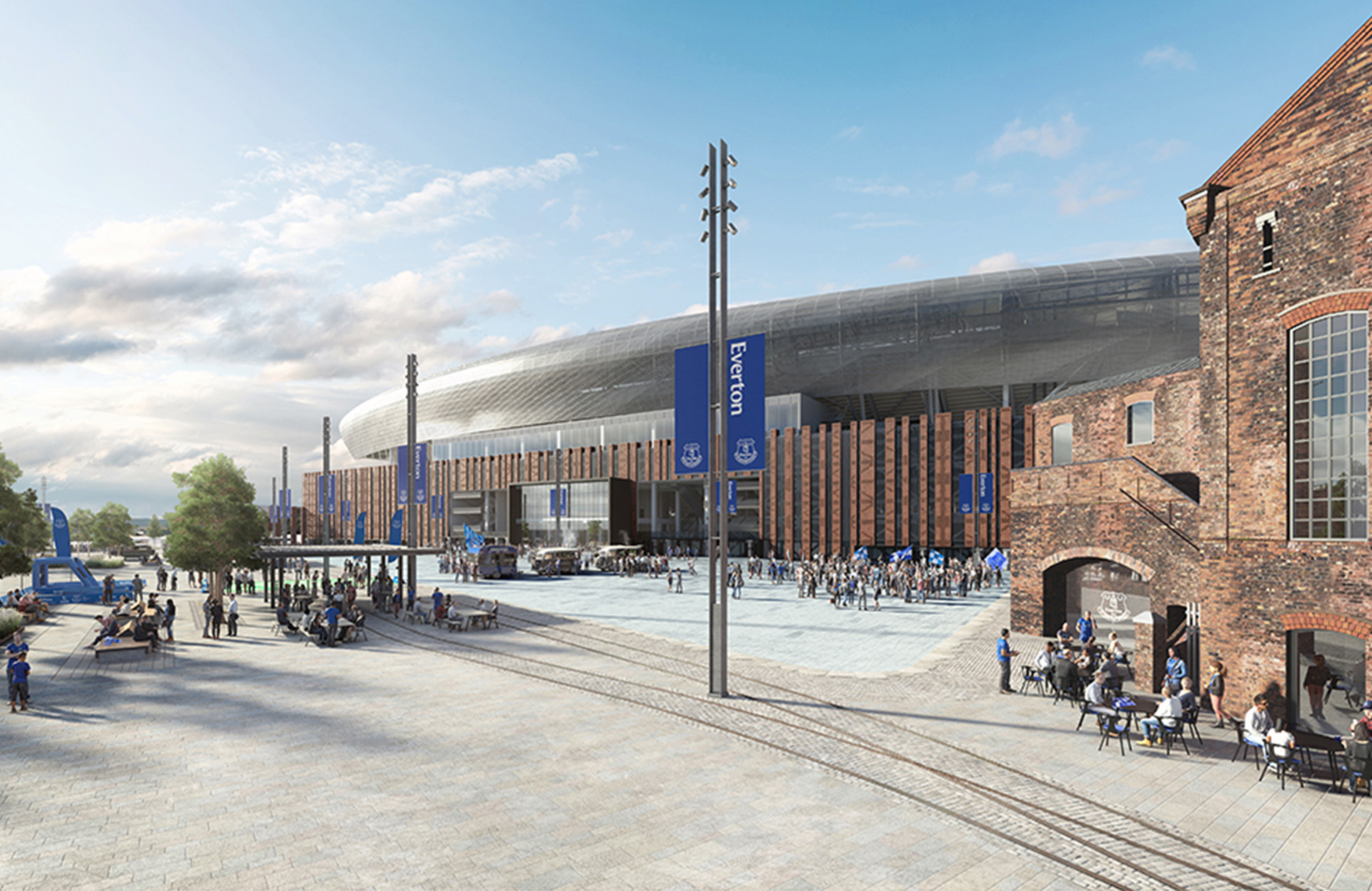
Fan plaza (render) incorproate the historic Hydraulic Tower
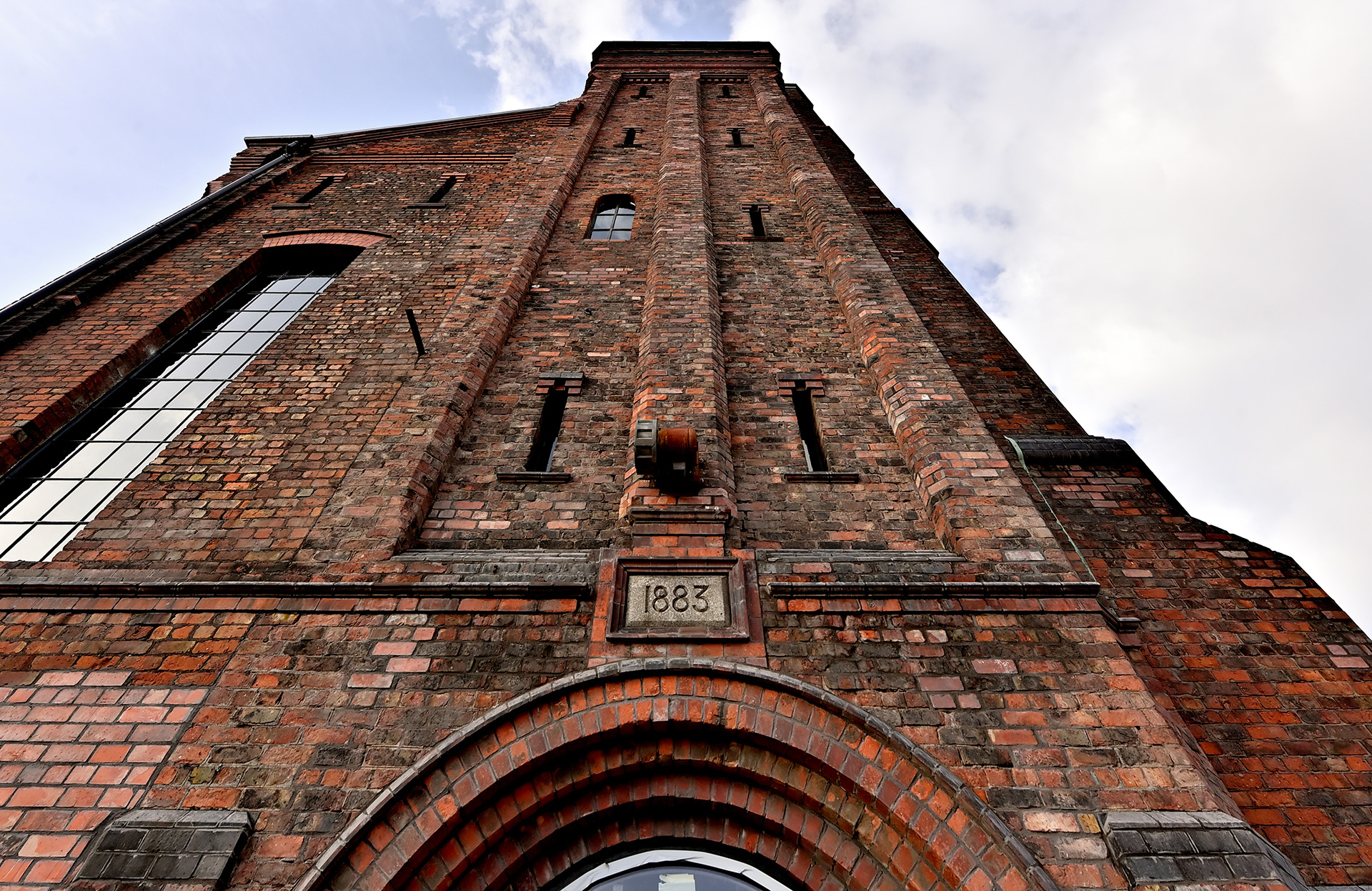
Hydraulic Tower
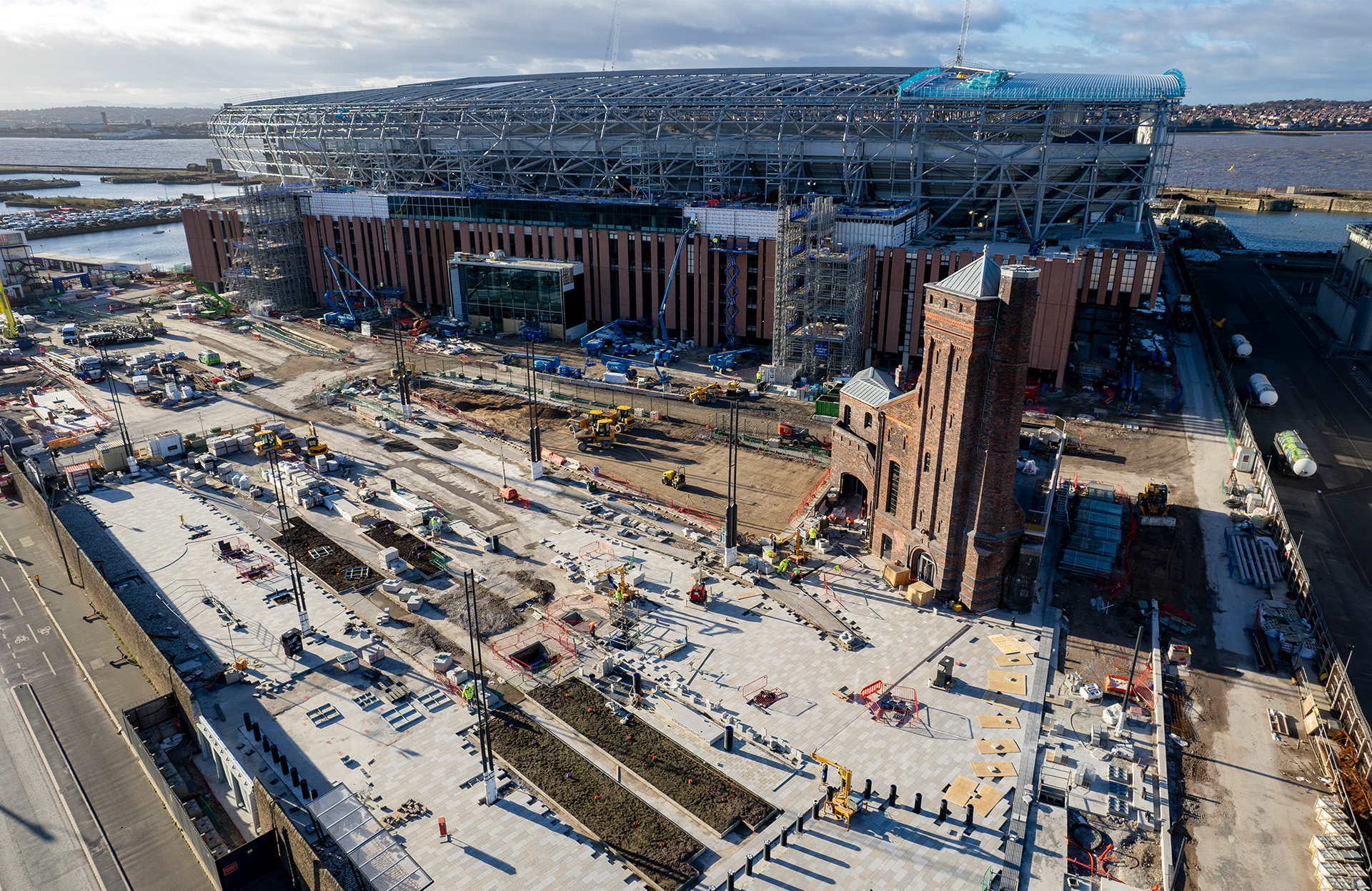
Construction of the fan plaza
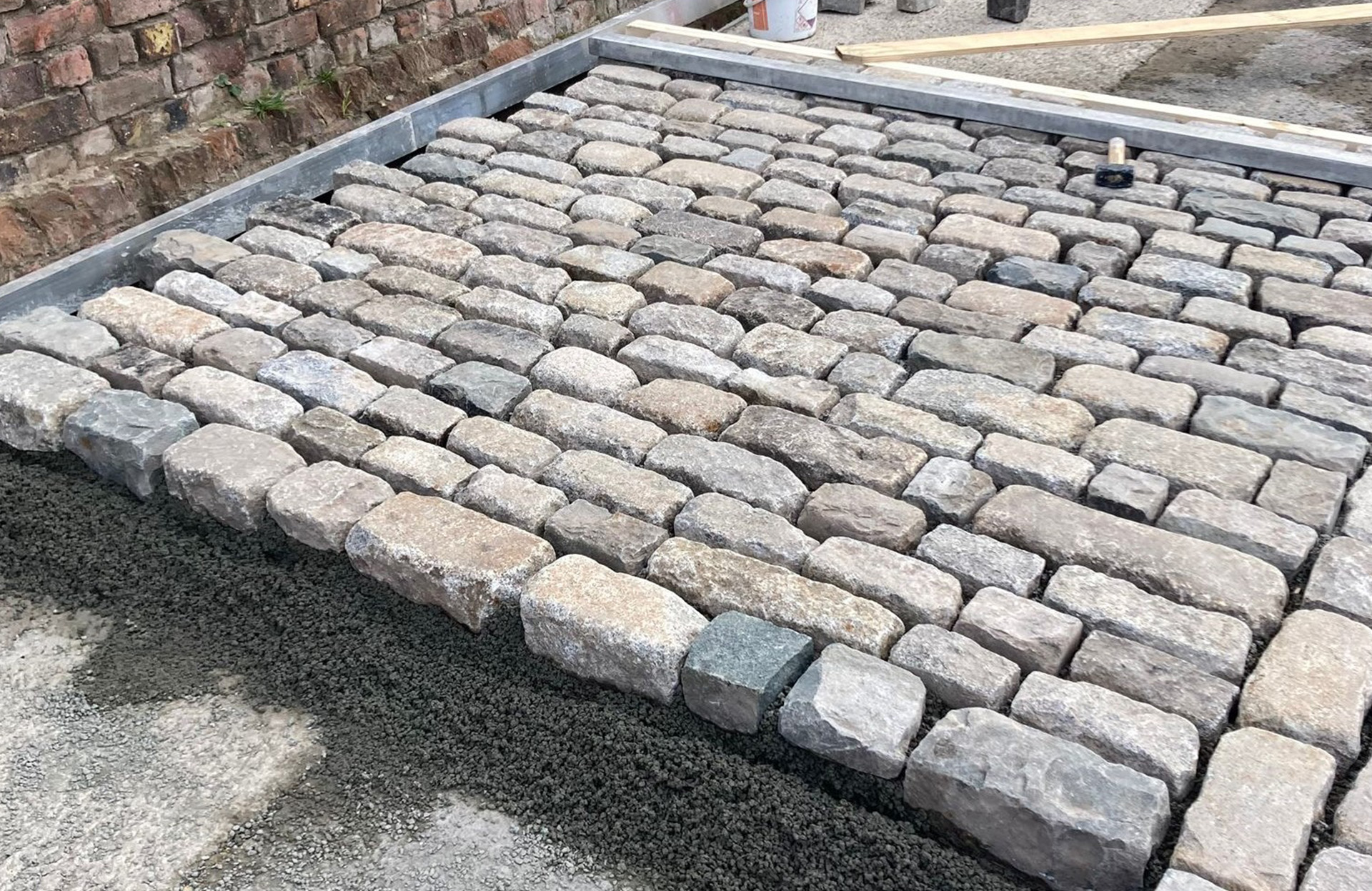
Cobbles
Involving the fans
The club toured a variety of stadiums to learn lessons for the build and decided on a design which would keep the fans “as close to the pitch as possible”, says Waldron. When Modus visited in October, the build appeared to be going remarkably smoothly – the main structure was more or less complete and the seating had started to go in. The December 2024 completion date seems very achievable, something of a surprise given the overrun on similar projects such as the Tottenham Hotspur Stadium, Wembley and the problems that dogged both Brazil and Qatar’s building programmes in the run-up to their respective hosting of the World Cup in 2014 and 2022.
“Stadiums are difficult projects,” says Lloyd. “They’re very complex. They need to provide retail, hospitality, sports facilities, office spaces and there are lots of operational issues. We had two years of pre-contract planning and that has been an immense benefit because we really got to tackle the details with Laing O’Rourke, the contractor.”
As soon as Bramley-Moore is operational, work will start on demolishing Goodison Park. Everton prides itself on engagement with its fans, most of whom are local to Liverpool, unlike fans of bigger, more world-renowned clubs in the north-west such as Liverpool, Man City and Man Utd. Through its charity, Everton in the Community, which offers everything from housing support to suicide prevention initiatives and work experience, some of the Goodison site will be given over to benefit locals, although housing is likely to cover most of it.
It’s going to take fans some time to adjust from the familiarity of Everton’s current home to its new one. The club is hoping to woo fans by involving them in a soft opening of the stadium as they test it for crowd-safety measures. Whether it can woo others too and give the surroundings a much-needed leg up, we will have to wait and see.
“It was the worst site to build on,” says Waldron, “but it will be the best site in the end.”

